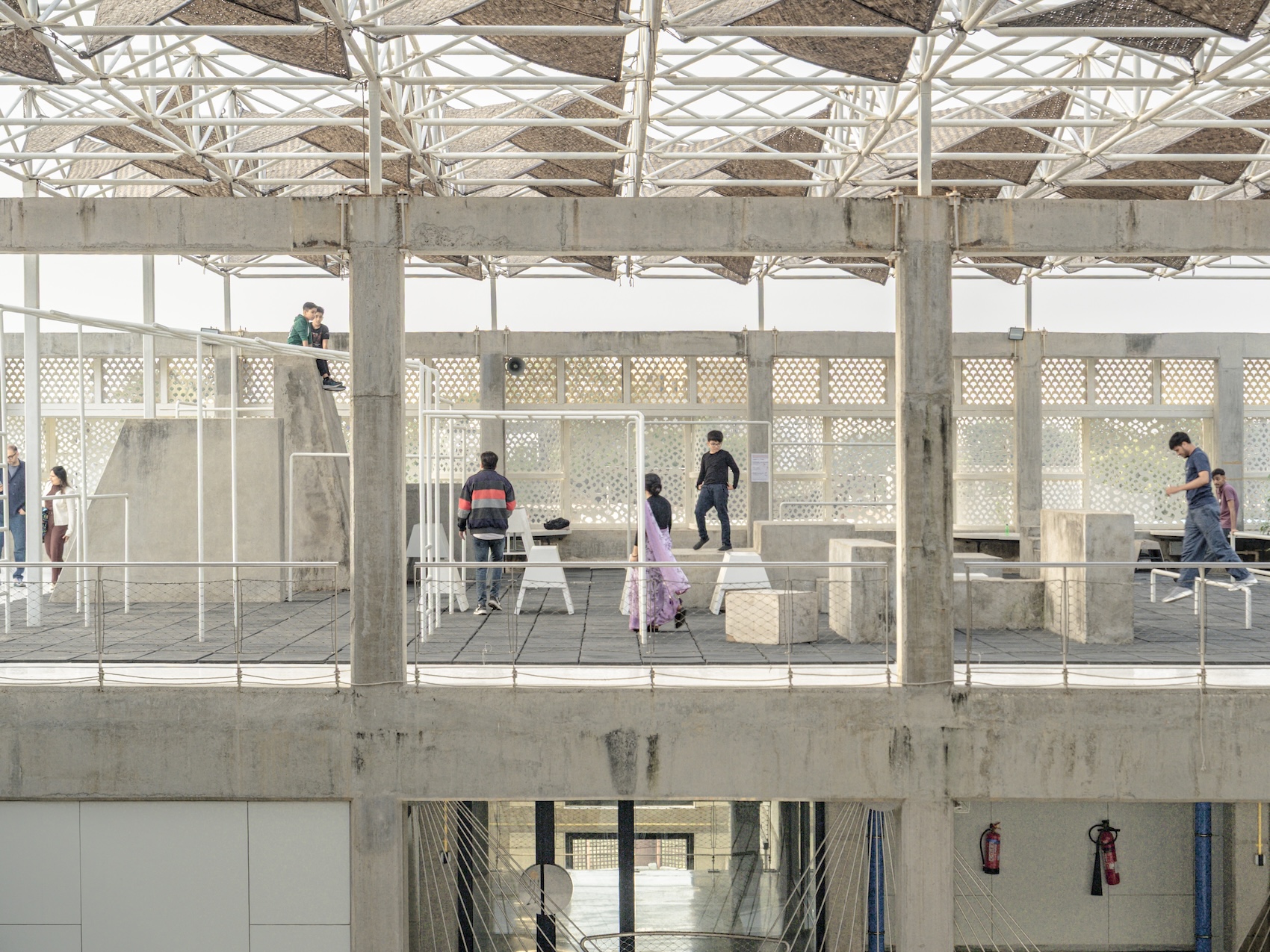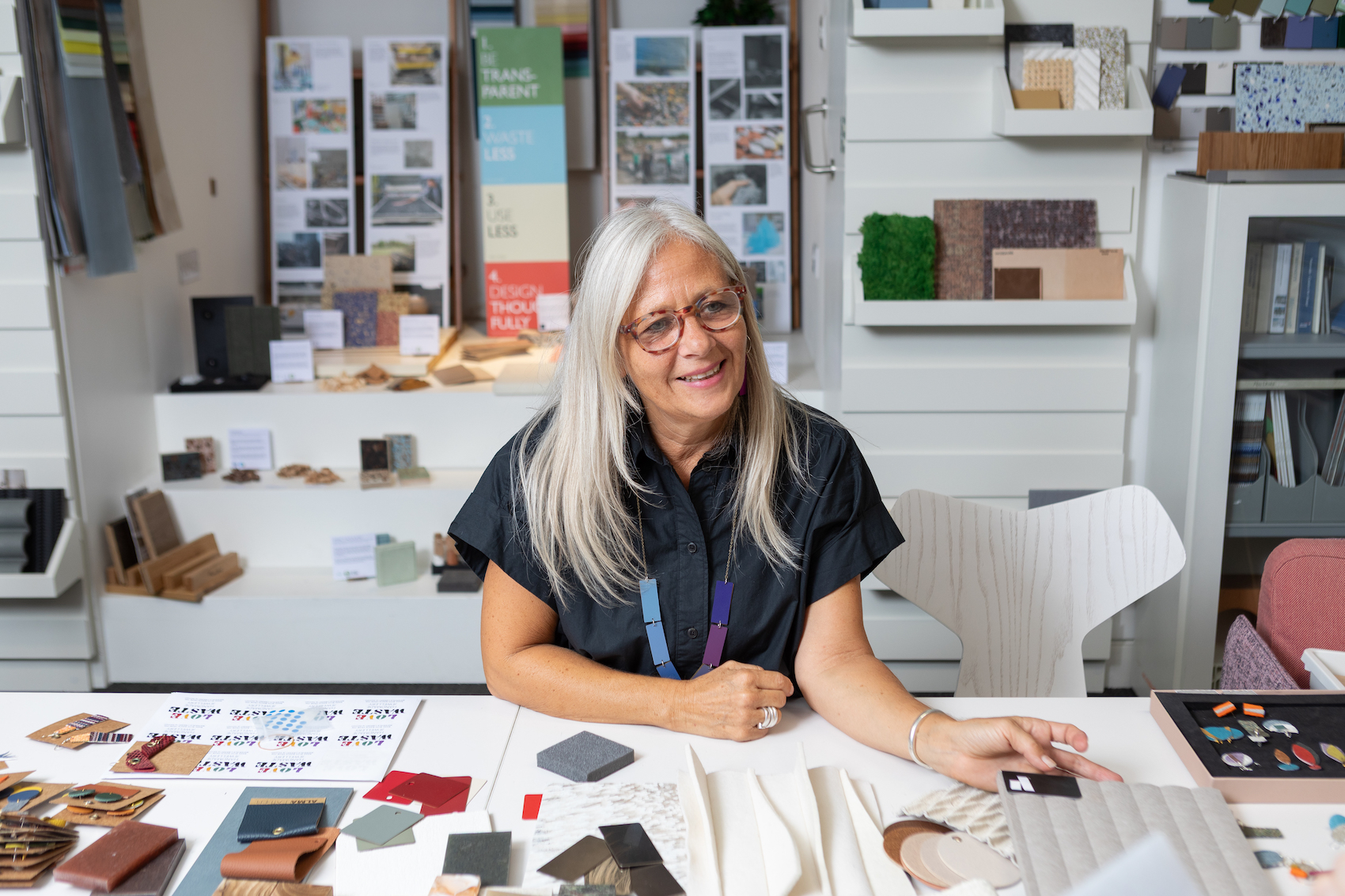The Schomburg Center for Research in Black Culture is a crucial component of Harlem’s thriving cultural scene and the embodiment of J Max Bond Jr’s aptitude for projects that combine civic idealism and understated aesthetics.
The unassuming brick facade seems like a natural growth of the unornamented eastern flank of the neighbouring Beaux Arts library. Photograph by Eduard Hueber/archphoto.
Whitney Young—civil rights legend; long-time director of the Urban League; friend and intellectual foil to presidents and business leaders—made a fateful appearance at the 1968 meeting of the American Institute of Architects. There, speaking to conventioneers in Portland, Oregon, he dressed down the design world in terms that only seem sharper and more frank today than they did 55-years ago: “One need only take a casual look at this audience to see that we have a long way to go in this field of integration of the architects,” he said.
“I almost feel like Mr Stanley looking for Dr Livingston – in reverse… As a profession, you ought to be taking stands on these kinds of things. If you don’t as architects stand up [and] consciously and deliberately seek to bring in minority people who have been discriminated against in many cases… then you will have done a disservice to the memory of John Kennedy, Martin Luther King, Bob Kennedy, and most of all, to yourselves.”
For a crowd still reeling from the assassinations of the latter a mere two months before, the speech was a wake-up call. Many architects and designers heard it—or at least heard about it. But Max Bond Jr was one of the few who truly answered.
The same year that Young exhorted the profession to rededicate itself to the cause of racial progress, Bond, then 33, took a leading role in a recently-launched organization, the Architects Renewal Committee of Harlem (ARCH). Intended, in Bond’s words, as a “planning review board of representatives from community organisations,” ARCH fought for better housing, better public services, and innovative design solutions to the then-chronic social disorders plaguing America’s most famous black neighbourhood. For Harlem, the group was a lifeline, the first and firmest bridge towards a brighter urban future. For Bond, it was the first stage in a storied career that would lead, in time, right back to Harlem.
Exhibition space focuses on African American, African Diaspora and African experiences. Photograph by Edward Hueber/archphoto.
Bond, who died in 2009, had been born in Louisville, Kentucky, son of a prominent educator. His fascination with buildings began, according to legend, with his happening on a remarkable-looking spiral staircase at the Tuskegee Institute, where his father taught; as an origin story, the anecdote seems almost too perfect, tying the future designer to an image of gradual upward ascent. Pursuing his own studies at Harvard, Bond completed his training at just 23, and instantly set about seeking work as far afield as Europe and West Africa.
By the time ARCH was formed, Bond had established himself in New York as one of the city’s most promising African-American architects – and in the decades that followed, his prominence would become national, as his firm (first known as Bond Ryder & Associates, later as Davis Brody Bond) built a reputation for practical, socially-minded projects that combined civic idealism with understated aesthetics. The Bolgatanga Library in Ghana of 1968; in Alabama, the Birmingham Civil Rights Institute, completed in 1992; the September 11th Monument in Manhattan, in conjunction with designer Michael Arad: with each project, Bond demonstrated a facility for open-minded collaboration both with his architect colleagues and with the communities he felt bound to serve. “Architecture inevitably involves all the larger issues of society,” he once said. Having faced racial discrimination repeatedly in the pursuit of commissions, he knew whereof he spoke, and acted accordingly.
That quality would prove a key asset in the project that brought Bond once more to Harlem – and that now stands as a testament to the social crusade into which Whitney Young had helped conscript him. Opened in 1980, the Schomburg Center for Research in Black Culture was then and remains today one of the country’s foremost scholarly resources in the field of African-American studies. To get it built, Bond and his team had to face off against a daunting triad of obstacles: an awkward, incommodious site, squeezed between busy Lenox Boulevard and a landmark Beaux Arts library building; a less-than-promising context, at the dead centre of a neighbourhood that had endured chronic underinvestment for decades; and, at least according to rumour, the occasional suspicion of neighbouring residents, uncertain why a centre for black culture bore a name like ‘Schomburg.’ (Librarian and book collector Arturo Schomburg, whose manuscripts formed the core of the original collection, was of Afro-Caribbean extraction.)
With extensive additions from Bond’s firm in 1991 (the commodious Langston Hughes auditorium) and a commendable refresh six years ago (by architect Marble Fairbanks), the building is perhaps most remarkable for what it does not try to do: eschewing grand gestures or overt rhetoric, the Center appears content to step back, its all-brick façade seeming like a natural outgrowth of its older neighbour’s unornamented eastern flank. A lofted entryway, inviting passersby into the double-height reading room; abstract massing, like a row of the area’s famous brownstones reduced to linear simplicity; an open green space to the west, allowing space for students and exhibition visitors to pause and reflect – the design is nothing if not deferential, almost obsessively so. But if it seems too reserved for some tastes, it’s worth considering what that strategy has helped achieve.
Created by a firm whose founder was famous for his own, highly reserved manner – one that doubtless helped him navigate an often hostile profession – the Schomburg Center shows just how Bond was able to put his social commitments into practice through a diligent, sensitive pursuit of fundamentals. In addition to its ongoing tradition of outstanding conservation and public outreach, the Schomburg Center is now one of the most venerable components of the thriving cultural scene in Harlem, a neighbourhood as vital and dynamic as it has ever been. Its recovery, dating to the years just after the project was completed, is a credit to groups like ARCH who always saw its potential; at the same time, it is a reproach to the field of architecture, which despite the success of Bond’s practice still has not done enough to draw in more black architects. Only a few might have that rare combination of talent, pluck and patience that made Bond so effective an agent for addressing social inequity in the built environment. But we need all the help we can get.















